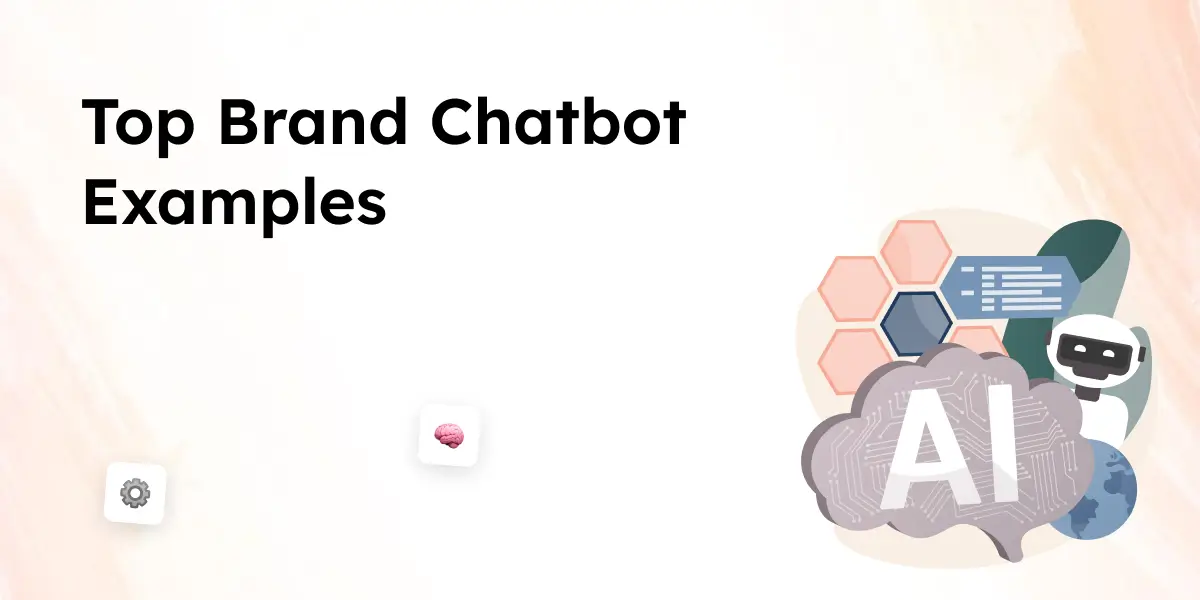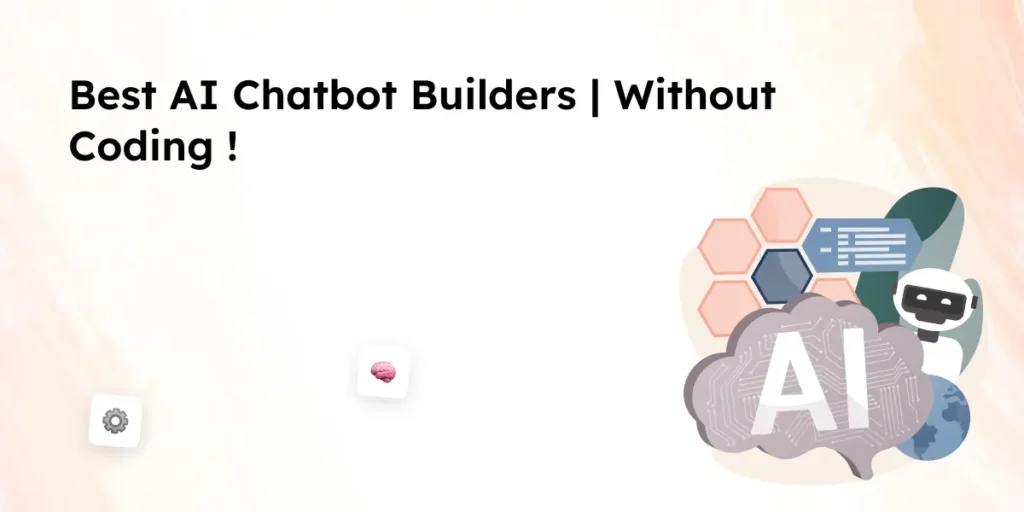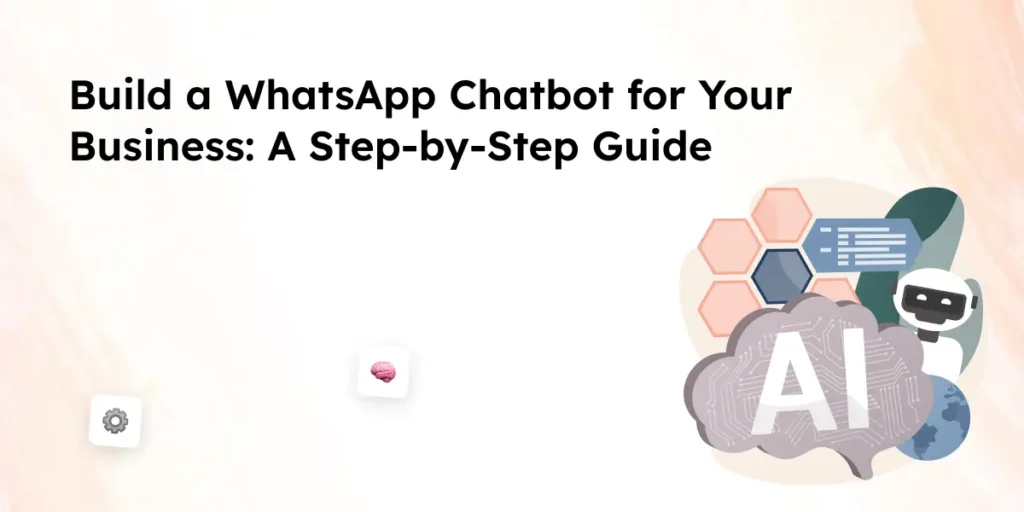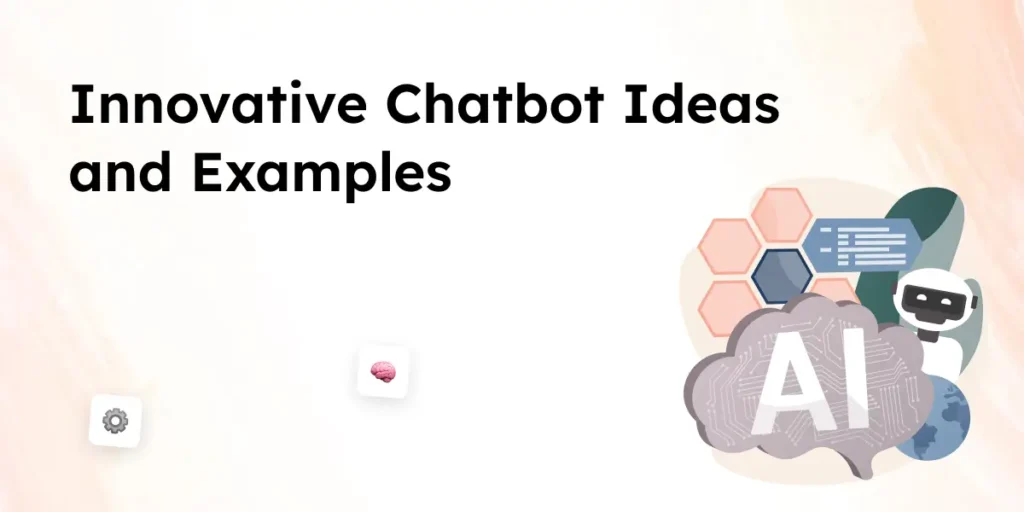Businesses are increasingly using AI chatbots to handle customer queries, improve customer service, and enhance customer engagement. The global chatbot market is expanding as companies rely on chatbot automation to reduce response time and improve customer satisfaction. From e-commerce sales chatbots to customer service chatbot examples in banking, chatbots are available in various forms, including virtual assistants and conversational AI chatbots powered by natural language processing.
This article explores 13 chatbot examples across industries, showing how brands use AI-powered chatbot solutions to personalize interactions, streamline support, and enhance the overall customer experience.
10+ best chatbot examples
1. Starbucks Chatbot – AI Chatbot for Seamless Ordering
Starbucks chatbot allows customers to place orders, check menu items, and find nearby stores using artificial intelligence. The Starbucks chatbot is available on Facebook Messenger and the Starbucks app, making it easy for customers to interact without needing human customer service.
How the Starbucks chatbot helps customers:
- Lets users place and modify orders through a conversational chatbot
- Provides personalized recommendations based on their preferences
- Uses AI chatbot technology to track loyalty points and promotions
- Reduces response time by handling customer queries instantly
This chatbot makes ordering more convenient while enhancing the overall customer experience. Starbucks created an AI chatbot that simplifies the process for busy customers, making it a successful chatbot example in the food and beverage industry.
2. Sephora Chatbot – Marketing Chatbot for Personalized Beauty Assistance
Sephora’s chatbot uses artificial intelligence to help customers find the right beauty products based on their preferences. The chatbot is available on Facebook Messenger and the Sephora app, making beauty consultations accessible anytime.
Why this chatbot is one of the best chatbot examples:
- Offers personalized beauty recommendations using customer data
- Helps customers book in-store consultations and tutorials
- Uses chatbot automation to provide product reviews and tutorials
- Engages users through a marketing campaign focused on beauty tips
This marketing chatbot enhances customer engagement and is an excellent example of how chatbots help businesses personalize shopping experiences.
3. Bank of America Chatbot – AI Chatbot Example for Finance
Erica, the AI chatbot from Bank of America, is designed to improve customer service by assisting users with their banking needs. This virtual assistant can understand and respond to customer inquiries using natural language processing.
How Erica enhances customer support:
- Provides real-time updates on balances and transactions
- Analyzes customer data to offer budgeting and savings tips
- Uses chatbot technology to remind customers about bill payments
- Handles customer queries quickly, reducing the need for a human agent
By integrating AI chatbot technology, Bank of America has redefined customer service in the banking industry.
4. Domino’s Pizza Chatbot – AI Chatbot for Order Tracking and Sales
Domino’s chatbot, known as Dom, helps customers place orders and track deliveries. The chatbot is available on multiple platforms, including Facebook Messenger, WhatsApp chatbot, and the Domino’s app.
How the Domino’s chatbot improves customer interactions:
- Lets customers place and modify orders through a conversational chatbot
- Tracks deliveries in real-time using AI chatbot technology
- Uses chatbot automation to handle customer queries related to menu items
- Enhances customer service by reducing response time
Domino’s chatbot is a great example of how chatbots can handle food orders efficiently while improving the customer experience.
5. H&M Chatbot – Conversational Chatbot for Fashion Recommendations
The H&M chatbot is designed to help customers find clothing items that match their style. The chatbot is available on Kik and provides personalized shopping suggestions.
Why the H&M chatbot is a great example of chatbot uses:
- Recommends outfits based on customer preferences
- Uses chatbot technology to analyze customer data and shopping habits
- Assists customers in finding the right size and fit
- Provides quick responses to customer queries about product availability
The H&M chatbot makes online shopping more interactive and is a great example of chatbots used by businesses in fashion retail.
6. Duolingo Chatbot – AI Chatbot for Language Learning
Duolingo’s chatbot helps users practice different languages by simulating real-world conversations. This AI chatbot example shows how artificial intelligence can enhance learning experiences.
Features of the Duolingo chatbot:
- Uses AI chatbot technology to personalize lessons
- Provides real-time corrections and feedback
- Handles customer inquiries related to language courses
- Engages users with a conversational chatbot that adapts to their skill level
This chatbot example highlights how chatbots can handle customer education while making learning more interactive.
7. Tesla Chatbot – AI Chatbot for Customer Service
Tesla’s chatbot is available on its website to assist with customer support and vehicle troubleshooting.
How Tesla’s chatbot improves customer service:
- Handles customer queries about car features and updates
- Uses chatbot automation to provide step-by-step troubleshooting guides
- Reduces response time by answering frequently asked questions
- Integrates with Tesla’s customer support system to escalate complex issues to a human agent
This example of a chatbot shows how AI chatbots can improve customer service in the automotive industry.
8. Nike Chatbot – Sales Chatbot for Product Discovery
Nike’s chatbot helps customers find the best footwear and sports gear based on their preferences.
Why Nike’s chatbot is a successful chatbot example:
- Uses artificial intelligence to analyze customer data and recommend products
- Assists with size selection and product availability
- Uses a conversational chatbot approach to make shopping interactive
- Enhances customer engagement through AI chatbot technology
Nike’s chatbot is an excellent example of how sales chatbots help brands boost revenue.
9. Uber Chatbot – AI Chatbot for Ride Booking
Uber’s chatbot helps users book rides through messaging apps, making it easier to access the service.
Features of Uber’s chatbot:
- Allows users to book rides without using the main Uber app
- Uses chatbot technology to track driver status in real-time
- Provides estimated fare costs and trip details
- Uses chatbot automation to handle customer queries about ride policies
This chatbot example shows how chatbots are designed to improve the transportation experience.
10. Airbnb Chatbot – Customer Service Chatbot Example for Travel
Airbnb’s chatbot assists customers with booking and travel-related inquiries.
Why Airbnb’s chatbot is integral to customer service:
- Uses chatbot automation to provide quick booking confirmations
- Handles customer inquiries about listings, cancellations, and policies
- Reduces response time by automating common support questions
- Connects customers to a human agent when necessary
This AI chatbot example demonstrates how chatbots can handle customer needs in the travel industry.
11. Spotify Chatbot – AI Chatbot for Music Recommendations
Spotify’s chatbot helps users find new music based on their preferences.
Features of Spotify’s chatbot:
- Uses artificial intelligence to analyze customer data and suggest playlists
- Engages users with a conversational chatbot experience
- Handles customer queries related to song searches and account settings
- Improves the customer experience by personalizing music recommendations
Spotify’s chatbot is an example of chatbot adoption in the entertainment industry.
How to Implement a Successful Chatbot for Your Business
Chatbots are available in different forms, and businesses must choose the right type of chatbot based on their customer needs. Chatbot development involves integrating artificial intelligence to ensure chatbots help automate tasks, enhance customer engagement, and improve customer satisfaction.
Steps to implement an AI chatbot successfully:
- Identify the purpose – Determine whether the chatbot will handle customer queries, assist with sales, or provide customer support.
- Choose the right chatbot technology – Select between rule-based chatbots, AI-powered chatbots, or conversational AI chatbots.
- Integrate chatbot automation – Connect the chatbot with CRM systems, knowledge bases, and messaging platforms like WhatsApp chatbot or Facebook Messenger.
- Train the chatbot – Use natural language processing to help the chatbot understand and respond to customer interactions effectively.
- Test and refine – Analyze customer data to improve chatbot responses and ensure it meets customer needs.
AI chatbot development plays a key role in redefining customer service, and companies looking to improve customer service should focus on using artificial intelligence to personalize interactions and handle customer inquiries more efficiently.
Conclusion & Key Takeaways
Chatbot adoption has transformed how businesses handle customer support, sales, and marketing campaigns. The best chatbot examples show that AI chatbots can improve customer experience, reduce response time, and streamline operations.
Key takeaways from chatbot examples across industries:
- Chatbots can handle large volumes of customer inquiries without human agents.
- AI chatbots improve the customer experience by providing instant, personalized responses.
- Successful chatbot implementations include brands like Starbucks chatbot, Domino’s chatbot, and H&M chatbot.
- Companies using artificial intelligence for chatbot development can analyze customer data to enhance customer engagement.
- Chatbots will become even more advanced with the rise of generative AI and conversational chatbots.
Businesses looking to improve customer service can rely on AI-powered chatbot solutions to automate queries, enhance customer interactions, and drive overall customer satisfaction.
Frequently Asked Questions (FAQs)
1. What is a chatbot, and how does it work?
A chatbot is a software application that uses artificial intelligence to interact with users through text or voice. Chatbots are designed to handle customer inquiries, automate responses, and assist with various tasks such as customer support, sales, and marketing campaigns. They can be rule-based or powered by conversational AI for more human-like interactions.
2. What are the different types of chatbots?
There are several types of chatbots used by businesses, including:
Rule-based chatbots – Follow pre-defined scripts to answer customer queries.
AI-powered chatbots – Use artificial intelligence and natural language processing to understand and respond to customers.
Conversational chatbots – Provide a more interactive, human-like experience.
Sales chatbots – Assist customers with product recommendations and purchases.
Customer service chatbots – Handle support-related inquiries and automate responses.
3. How can chatbots improve customer service?
Chatbots help businesses handle customer queries quickly, reducing response time and improving customer satisfaction. AI chatbots also automate repetitive tasks, freeing up human agents for complex issues. Chatbots are available 24/7, making them a reliable customer support system.



